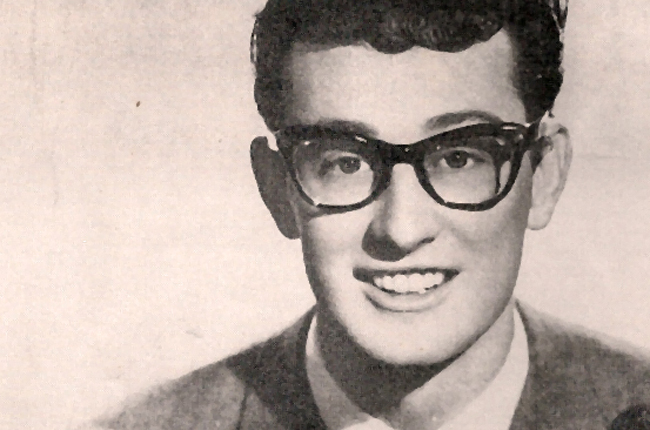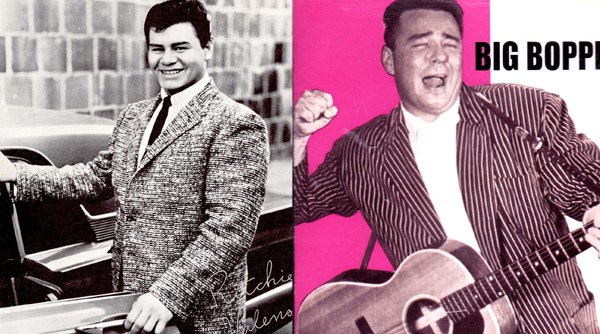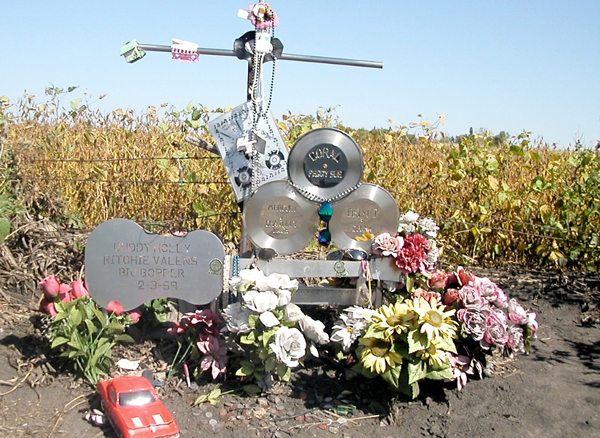Media
The day the music died

On 3 February 1959, a single engine Beechcraft Bonanza aircraft, flown by 21-year-old Roger Peterson, and carrying rock and roll sensations Buddy Holly, Ritchie Valens and JP Richardson – 'The Big Bopper' – crashed near Clear Lake, Iowa at around 1:30 in the morning. The three young rock stars never made it to their next concert. But they became immortal. By J BROOKS SPECTOR.
Years later, in 1971, Don McLean released his own haunting song, American Pie, to pay homage to the three stars – and what could have been their futures – had they lived past their youth. Holly was 22 years old, Valens was just 17 (!), and JP Richardson was the grizzled old man of the group at 28 when their plane crashed in the wintery cornfield.
Watch: Proof that the music died the day Buddy Holly left this earth. That was indeed the day:
This Winter Dance Party tour was set up to play concerts in 24 cities across the Midwestern US – in just three weeks. No musicians’ union rules on this trip. In fact, it was only happenstance that the three men were even on the plane. The flight was a quickly arranged charter flight to take the three performers on to the next leg of the tour, after the heat on their ramshackle tour bus gave up the ghost. Conditions on the tour seem to have been so disorganised that Buddy Holly’s drummer, Carl Bunch, actually ended up in the hospital with severe frostbite on his feet from their wintertime travel.
Looking back, the touring arrangements seem to have been primitive and improvisational. At a time, now, when rock stars travel first class – if not by chartered jet – and an army of roadies and toadies cater to nearly their every whim, right down to the correct brand of designer water or the right make of imported champagne, conditions on this tour seem to have been rudimentary – what with freezing night rides on a bus that was falling apart.
Perhaps this unruly tone for the tour was somehow in keeping with the spirit of this new, wild, and untutored music, a music that bootlegged the energy of African American R&B (or even Latin styles as in the case of La Bamba) into popular music, overwhelming the bland, plain vanilla sounds of Ricky Nelson or Pat Boone that were more preferred by parents. For most adults, the raw, real deal of the music of a Holly, a Valens, a Richardson or an Elvis Presley was an alien, almost subversive cultural force; frowned upon – or worse – by parents, teachers and religious leaders, and just as eagerly embraced by legions of fans – clustered in record stores, watching Philadelphia (then American) Band Stand or dancing whenever and wherever they could. The music helped fuel – and was the soundtrack for – the new teen culture borne aloft by an overwhelming post-war baby boom and that was literally turning the teenager as an unstoppable cultural force.
Listen to Ritchie Valens’ La Bamba:
As chance would have it, the Clear Lake concert in the Surf Ballroom was not originally part of the stars’ tour, but eager promoters added it onto the schedule for 2 February to fill in a short gap in an already relentless schedule. By the time Buddy Holly had arrived in the Surf Ballroom for that evening’s gig, he was already deeply frustrated by the touring arrangements.
But the Clear Lake laundromat was closed for the day and Holly had to sort out some clean underwear and socks for the rest of the tour, so he was prepped to get a jump on the tour schedule with a plane flight, in contrast to that wretched bus. By contrast, the Rolling Stones haven’t had to do their own socks for a long, long time. As a result, Holly told his remaining band mates, minus the drummer who was already in the hospital, that they should charter a plane to their next stop, Moorhead, Minnesota, saving them some time. That way they could also duck out of the frigid 600km bus ride to the tour’s next stop.
And so, an airplane charter was hired for the princely sum of $36 per person for the small, single engine plane. JP Richardson had come down with the flu on the tour and so he arranged to swap with one of Holly’s band members, Waylon Jennings, for a seat on the plane rather than endure that bus again. Prophetically perhaps, when Holly learned Jennings wouldn’t be on the plane with him, he said to Jennings, “Well, I hope your ol’ bus freezes up” and Jennings is supposed to have answered, “Well, I hope your ol’ plane crashes”, an exchange that ended up haunting Jennings for the rest of his life. And this is how legends are born.
Meanwhile, Valens, despite his severe fear of flying, asked Holly’s other band member, Tommy Allsup, for the remaining seat. They tossed a coin in an offstage section of the Clear Lake ballroom. Valens won the coin toss, and got the remaining seat on the flight. Dion, another rising talent who was also on the tour, ultimately declined to join the group, explaining later that $36 was about the same as the rent his parents were paying for their home and so it seemed extravagant to him. Again, not quite the way it’s done these days, for musicians with real hits.

Photo: Ritchie Valens (L) and JP Richardson AKA The Big Bopper. WIKIMEDIA COMMONS.
In contrast to the mythology that has grown up around the doomed flight, there was no blizzard, but there was some light snow, as well as winds of gusting up to 30 knots and a cloud ceiling of around 950m above sea level. Since the altitude of the Mason City Municipal Airport was 400m, this left less than 600m of airspace between the ground and the thick cloud cover. The pilot told ground crew he would file his flight plan after taking off, but when he failed to do so hours later, plane owner Hubert Dwyer, contacted authorities and reported his aircraft missing. Six hours later, Dwyer flew another plane along the intended route and found the wreckage, 10kms northwest of the airport, in a cornfield. Holly and Valens’ bodies were near the plane, while Richardson’s remains were further away. Roger Peterson was still in the wreckage. The county coroner ruled all four men had died instantly from “gross trauma” to the brain.
Ultimately crash investigators determined the crash was due to poor weather conditions and pilot error, leading to spatial disorientation. In fact, Peterson was still taking flight instrumentation tests and was not yet certificated for flying in the kind of weather there was that night. Moreover, he had taken his training on instruments different than those in the plane he was flying, and he had failed his instrument check-ride shortly before the crash. Even worse, the instruments on his plane displayed information visually in a contradictory manner, meaning he could even have thought he was ascending when he was actually descending. Finally, he had insufficient weather information before taking off and if he had had a better understanding of the conditions, he might well have delayed his departure.
Of Buddy Holly and the rest of the doomed tour, Time magazine’s Claire Suddath would write on the fiftieth anniversary of the crash, that “If you go by the numbers, Buddy Holly’s career – which lasted a year and a half with only one number one single – hardly seems the stuff of legend. He only accepted top billing on the 24-day, 24-town Winter Dance Party tour alongside the Big Bopper (of Chantilly Lace fame) and Richie Valens (La Bamba) as a way to dig himself out of bankruptcy. And yet his influence on early rock ‘n’ roll is almost unmatched… Holly wrote his own material and used his signature pitch-changing hiccup to move seamlessly between country, R&B and rockabilly. When he died, he was only 22.”
Watch: The Big Bopper’s Chantilly Lace
Incredibly, after the crash, the Winter Dance Party tour kept going, now with Waylon Jennings singing Holly’s songs and with other teen sensations, such as the 18-year-old Frankie Avalon, flown out to fill up the musician’s card and finish the tour.
Something strange began to happen with Holly’s music in the meantime. His last single, It Doesn’t Matter Anymore, had not been moving on the pop charts, but soon record company execs saw Holly’s song move up to number 13. His records kept selling so the Decca label rushed out a quick greatest hits album that had especially vigorous sales in the UK. This made Holly a forebear of the emerging British rock scene. John Lennon and George Harrison said they had learned the guitar partly from Buddy Holly records and the first Rolling Stones’ single released in the US turned out to be a cover of Holly’s Not Fade Away.

Photo: Monument to Buddy Holly, Richie Valens and JP Richardson (The Big Bopper). Location: Approximately 8 miles north of Clear Lake, Iowa. WIKIMEDIA COMMONS.
The momentum of the memorialisation grew. Suddath explained, “The first song memorialising the musicians — Eddie Cochran’s Three Stars — was recorded just one day after their deaths. But Don McLean’s 1971 single American Pie turned the plane crash into a metaphor for the moment when the United States lost its last shred of innocence.” And this crash and the extinguishing of three young talents before they had even had a chance to make musical mistakes or join a magical mystery tour, has been tumbling through rock and roll history for a half century more representing, if not the end of the original vitality of rock and roll itself, at least the end point of the original bloom of rock, anarchy and innovation. On the fiftieth anniversary of their deaths, Terry Steward, president of the Rock and Roll Hall of Fame and Museum, would tell the media that “it was like a curtain coming down”.
Surely it isn’t a coincidence that McLean’s American Pie burst on the scene in 1971, on every rock music station in the nation, just as America’s agony in the Vietnam War had reached its awful climax…“Bye, bye Miss American Pie, Drove my Chevy to the levee but the levee was dry, Them good ole boys were drinking whiskey ‘n Rye, Singin’ this’ll be the day that I die, This’ll be the day that I die…” DM
Watch: Don McLean pays homage to the legend that is Buddy Holly
Read more:
- The Day the Music Died in Time.
- ‘The day the music died’? Hardly on CNN.
- Iowa’s historic Surf Ballroom is ‘a temple of rock ‘n’ roll’ in USA Today.
Photo: Many music fans believe that Buddy Holly was cut down in his prime. WIKIMEDIA COMMONS.
















 Become an Insider
Become an Insider